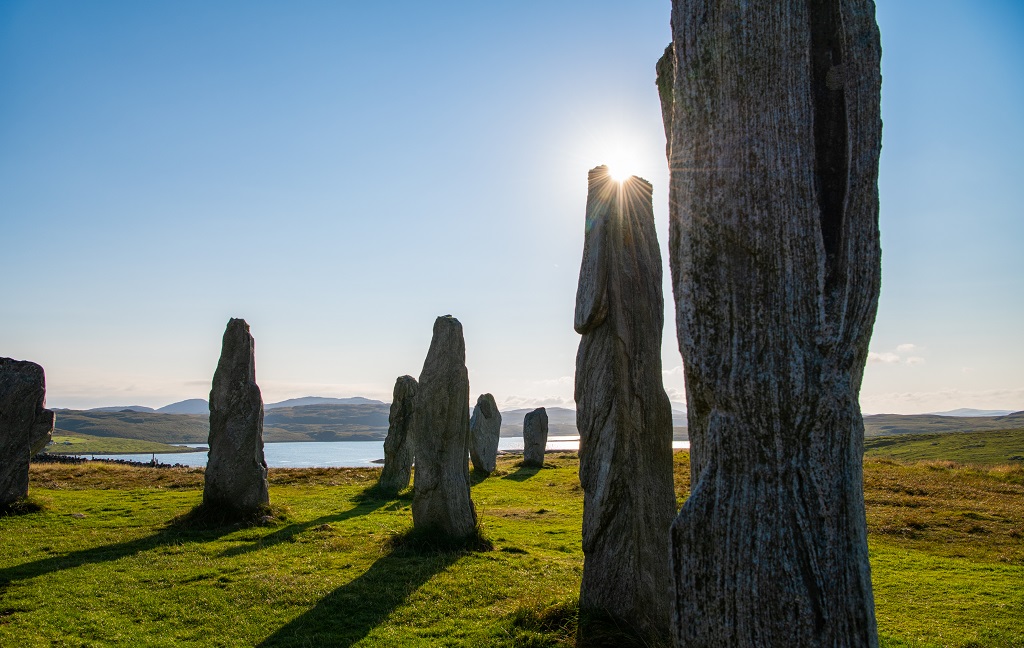The Summer Solstice has been celebrated for thousands of years and was especially important to our anicent ancestors. Join us on a whistlestop tour of some of the prehistoric places and practices associated with the longest day of the year.
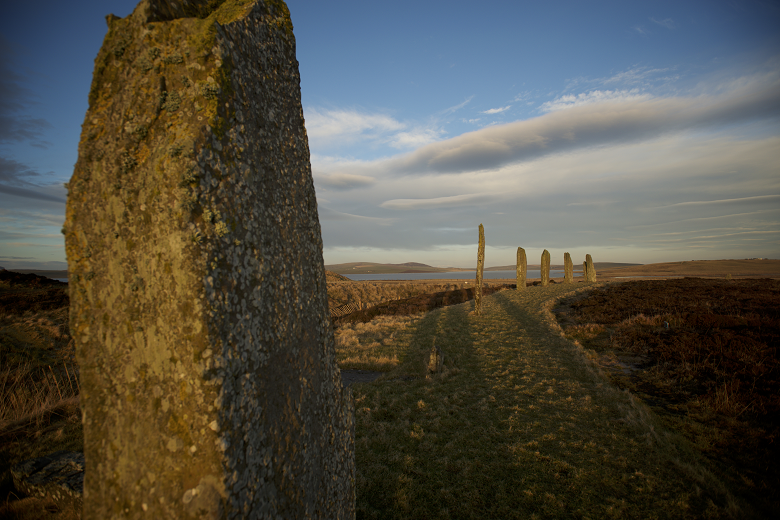
The Ring of Brodgar, one of several historic places in Scotland associated with solstice celebrations
What is the Summer Solstice?
The Summer Solstice is the longest day of the year. In the Northern Hemisphere that’s normally 21 June (sometimes a day either side) and 2023 is no different. This happens when the sun at its farthest from the equator, meaning it is visible for the longest, marking midsummer.
Prehistoric people would have easily observed the rising and setting of the sun, and the cycles of this, along with those of other celestial bodies would have allowed them to track progress through the year. This may have indicated to them important timings for the growing and harvesting of crops.
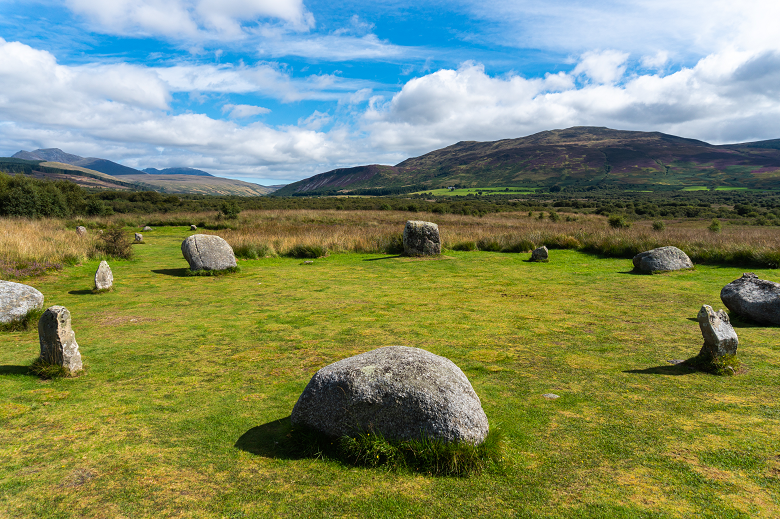
A stone circle on Machrie Moor, Arran
Grand designs
Many Neolithic and Bronze Age monuments appear to have been built around the position of the sun at the Summer and/or Winter Solstices. It’s difficult to be certain about their exact purpose. But work carried out by archaeologists gives us an inkling as to what they might have been used for.
Archaeologists have calculated and observed that some monuments appear to be aligned with the sunrise of the Summer Solstice. At Machrie Moor, Arran, four of the stone circles are aligned with a prominent notch at the head of Machrie Glen. On midsummers day, the sun rises from this notch.

Recumbent stone circles, like this one at Loanhead near Inverurie, demonstrate an interest in the sky at midsummer.
Recumbent stone circles, such as those at Loanhead and Tomnaverie, are unique to the north-east of Scotland. They feature a large stone laid on its side (recumbent), flanked by two upright stones.
These monuments are found in places with open views to the south. They seem to have been designed to frame the Moon, with a particular focus on the midsummer Moon.
At Tomnaverie, research has suggested that the direction of the summer solstice is marked by the diminutive orthostat on the north-east arc of the ring, and the circularity of the monument traces out the solar year. It’s even been considered that the specific types of stone used in the monument reflect the rising and setting sun.
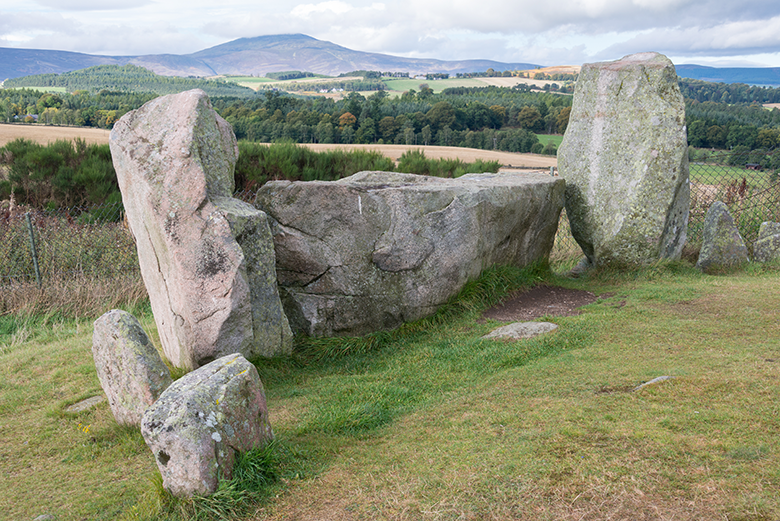
Tomnaverie Stone Circle
A special gathering
We can imagine that the prehistoric inhabitants of the area, and perhaps even much wider, would gather on Machrie Moor to observe the solstice at a location which was clearly very important to them.
At Calanais I on Lewis research by Dr Gail Higginbottom has shown that if you stand in the centre of the circle during the Summer Solstice you will seen the sun rise over one of the stones. Dr Higginbottom has calculated that there is only a 1.25% possibility that this is by chance.
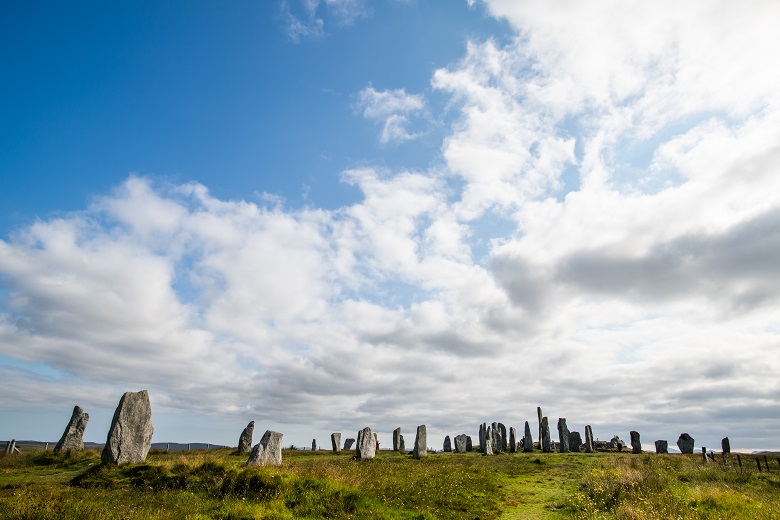
Calanais Standing Stones on the Isle of Lewis
At (or close to) other prehistoric monuments showing alignment for the Summer Solstice, archaeologists have found evidence of feasting and communal gatherings. It is easy to conceive that longest day would have been a day of much celebration and ceremony.
Perhaps this also coincided with people gathering pitchstone from the outcrops on Arran before taking it to locations across northern Britain.
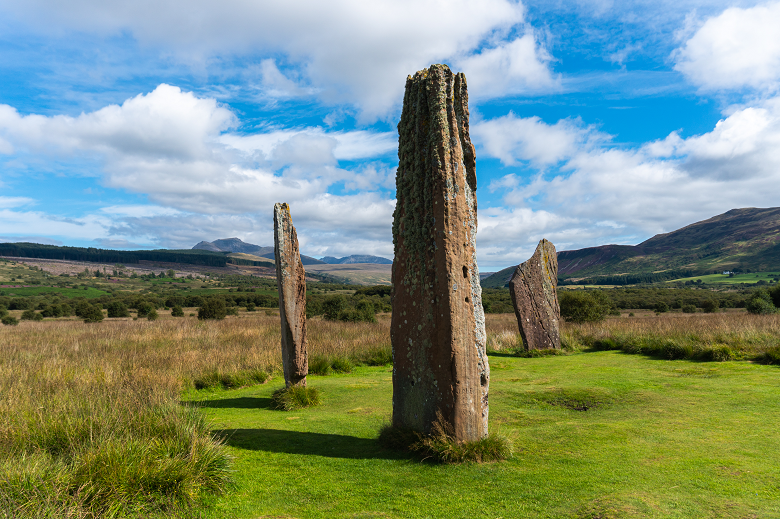
Standing stones on Machrie Moor, where prehistoric communities may have gathered to mark the Summer Solstice
Continued traditions
Midsummer has been celebrated in northern Europe into the present day, and traditions such as the lighting of bonfires, the raising of maypoles and dancing are still practiced. With the establishment of the Christian Church, pagan celebrations, including the solstice, were incorporated into feast days.
St John’s day (celebrating the birth of John the Baptist) falls on the Summer Solstice, and recent research of the Ruthwell Cross has shown that the panel depicting John the Baptist with the lamb of God would have, when the Cross was in its original location, faced west towards the setting sun:
this orientation corresponds with the liturgical feasts celebrating the birth of John the Baptist near the summer solstice”

The Ruthwell Cross is 5.2 metres tall and was carved in the early 700s. It is now located inside the parish church of Ruthwell, Dumfries and Galloway
Watch the sunrise
A number of our Properties in Care, some of which are prehistoric monuments, have seen gatherings for the Summer Solstice over the years.
Cairnpapple Hill, Holyrood Park, the Ring of Brodgar and the Stones of Stenness are some of the other places that people have chosen to visit to watch the special sunrise.
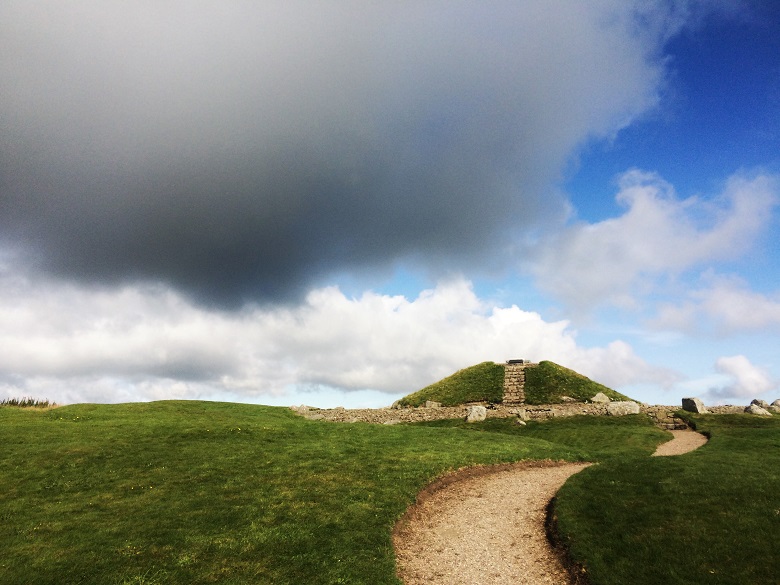
Cairnpapple Hill
If you’re getting up and about early for the Summer Solstice this year, we’d love to see your photos! You’re always welcome to share snaps of your historic adventures on our Historic Scotland social media channels. Find us on Instagram, Facebook and Twitter.
Want more from our prehistoric sites? Check out the fascinating story of the mother and daughter duo who investigated Clava Cairns nearly 200 years ago.

